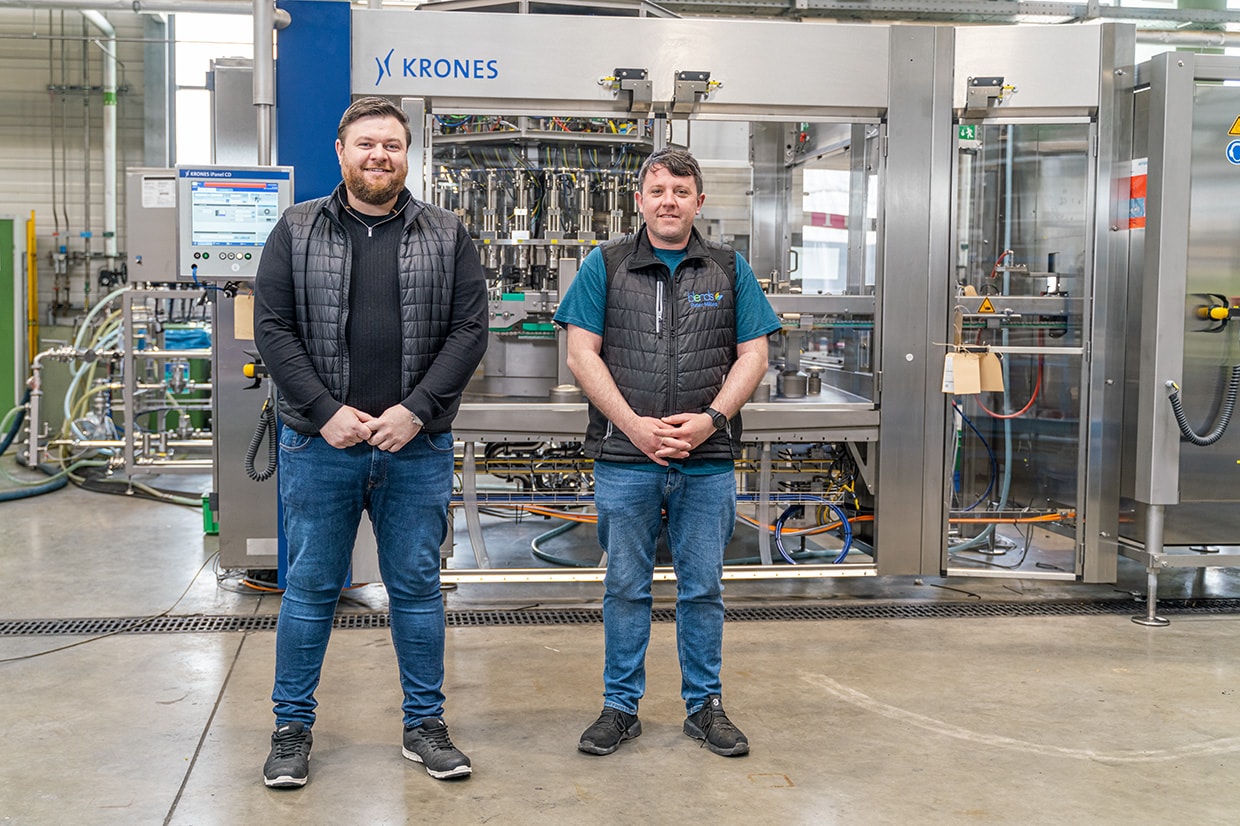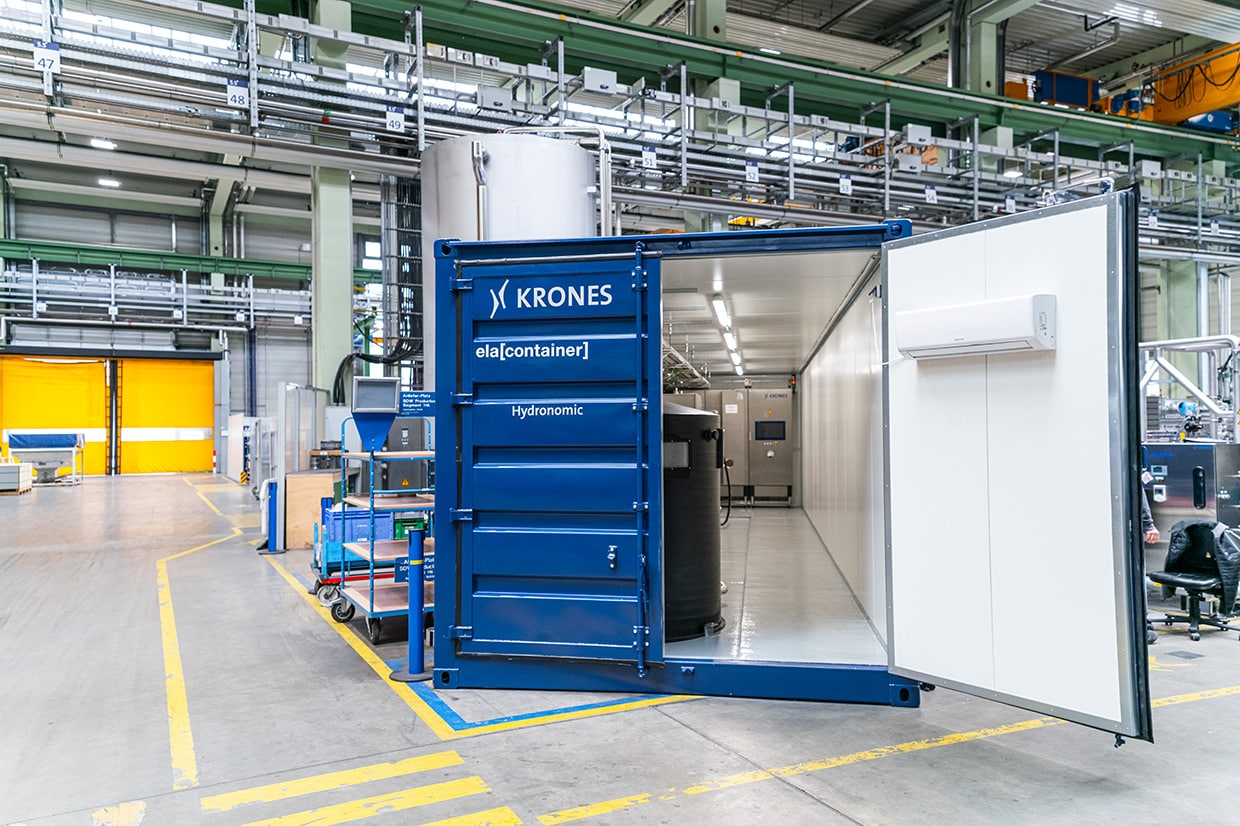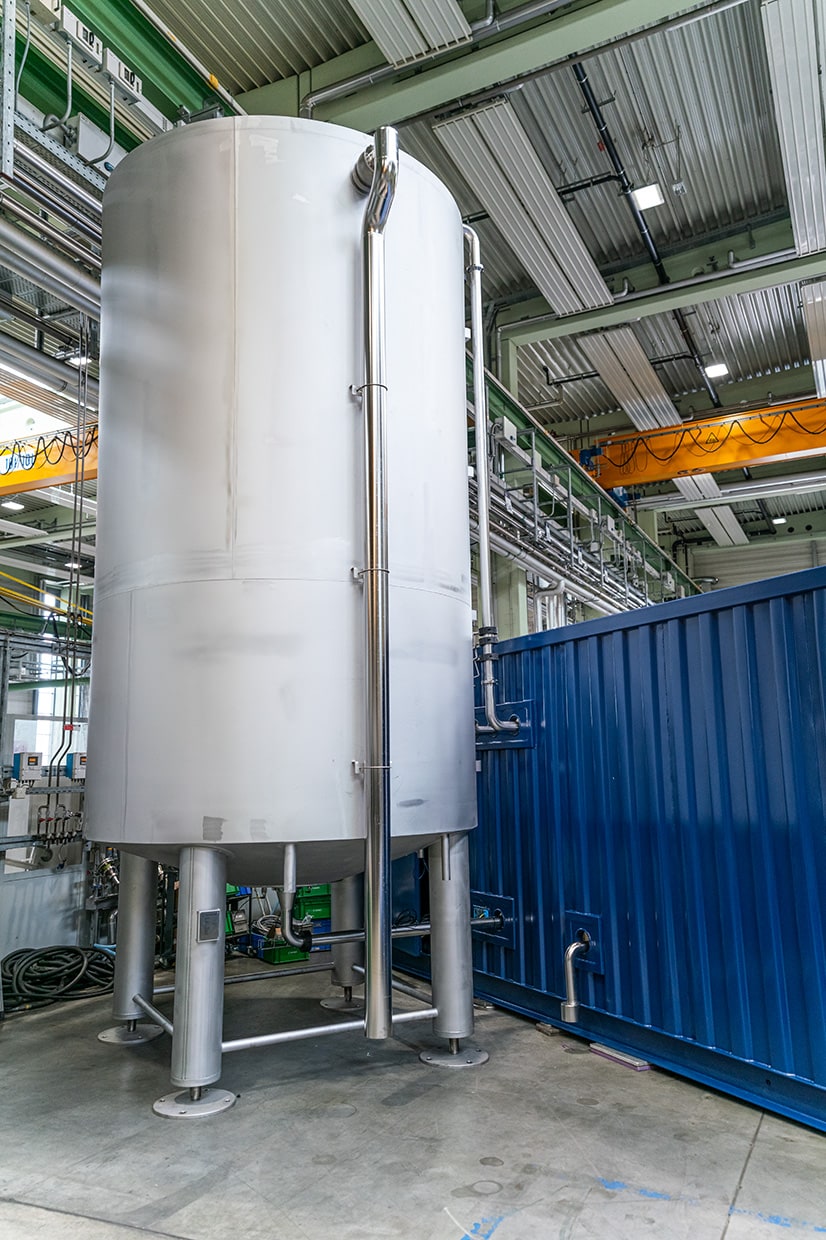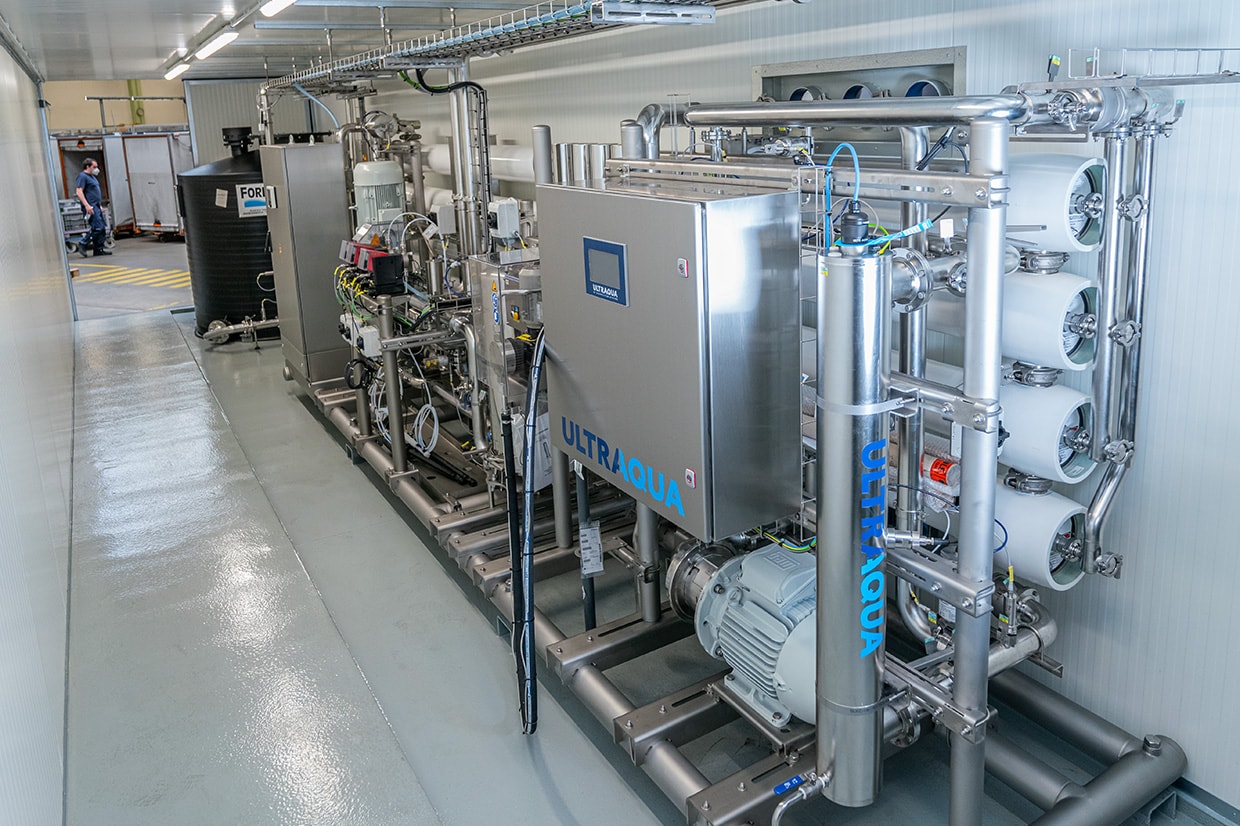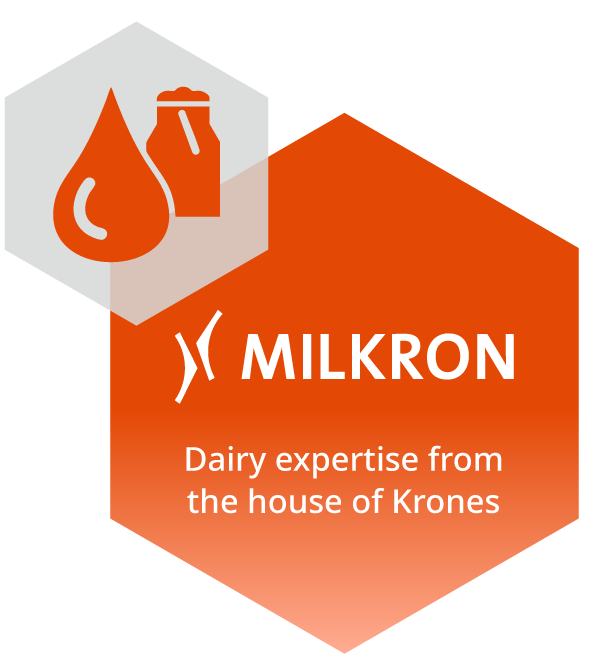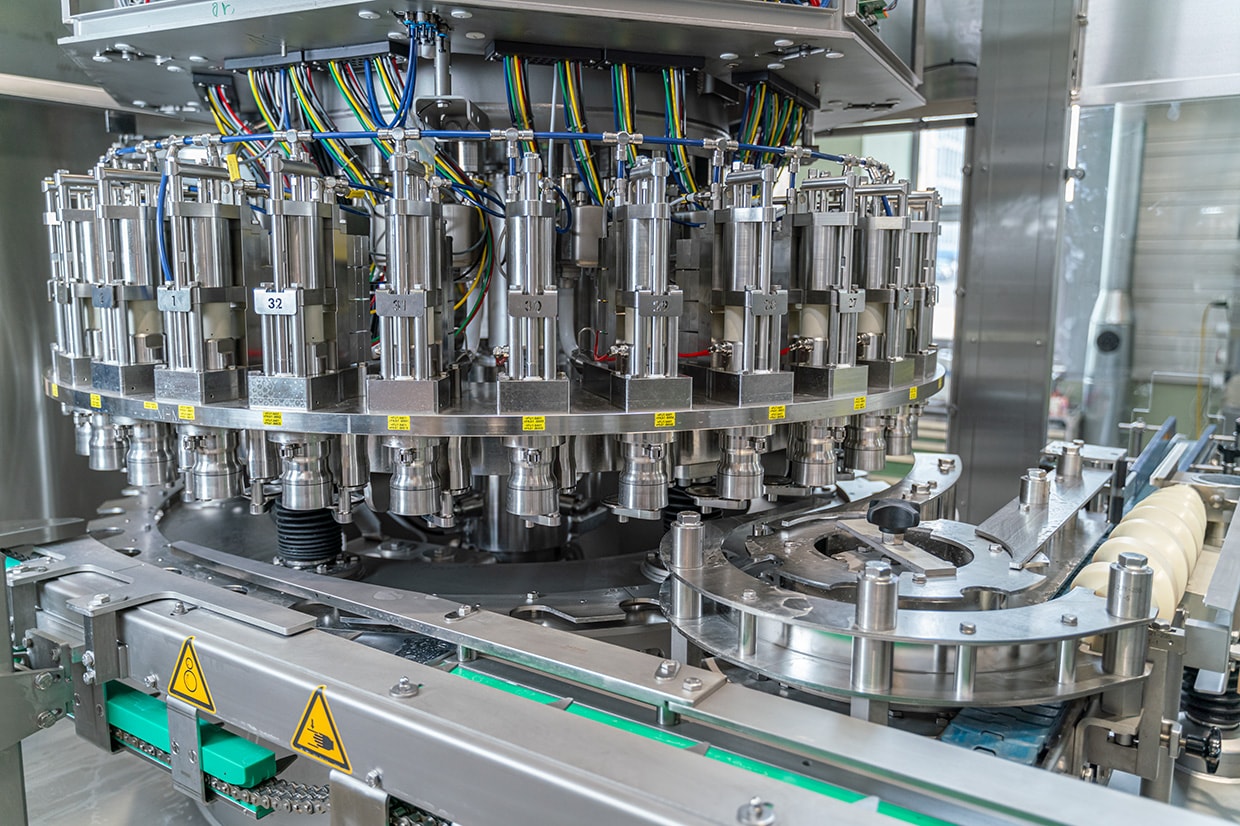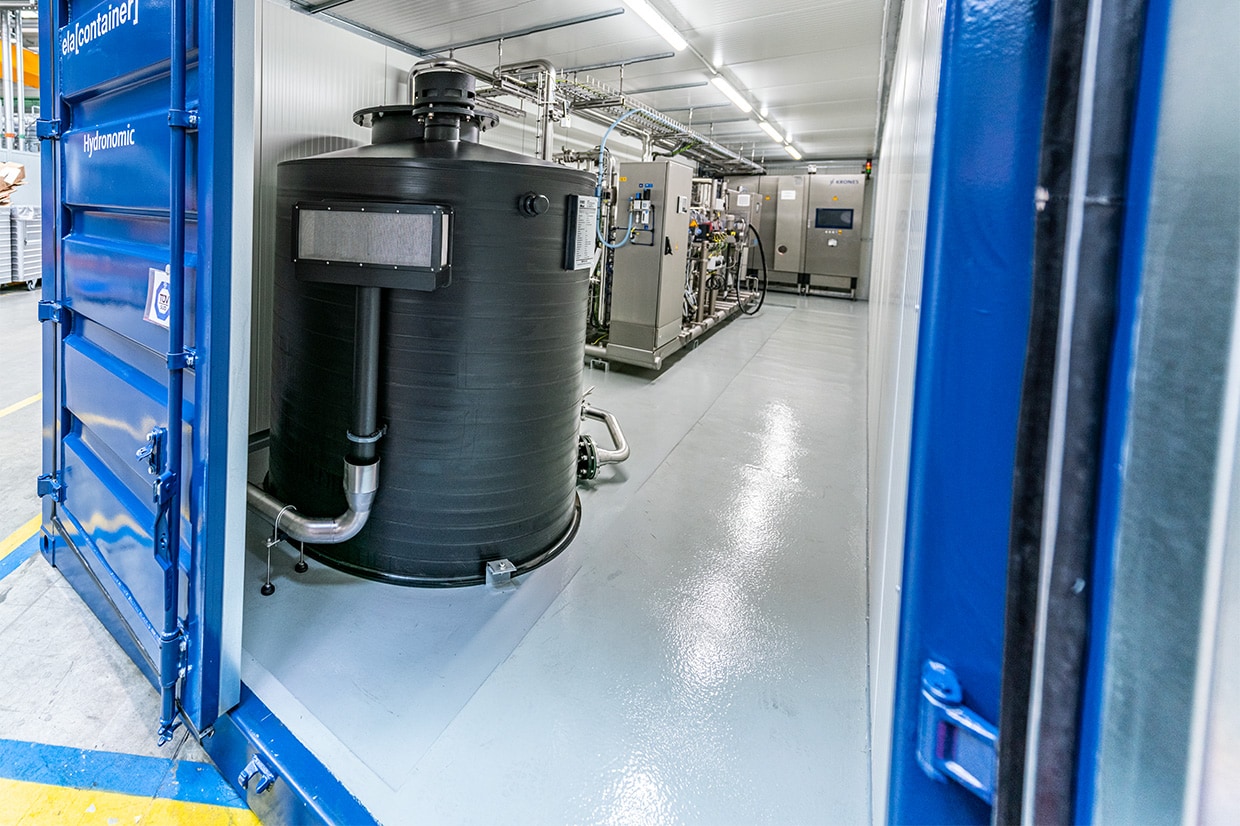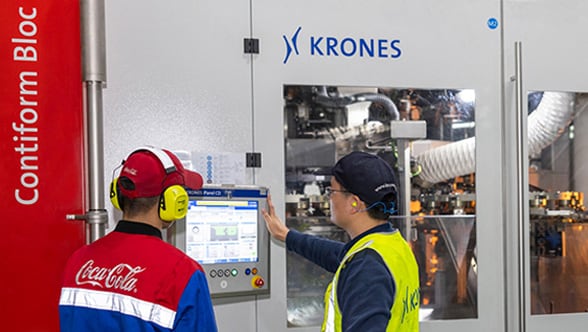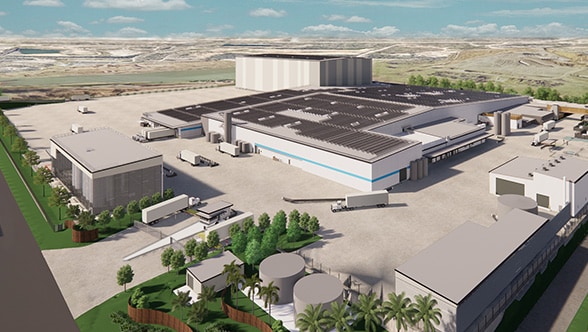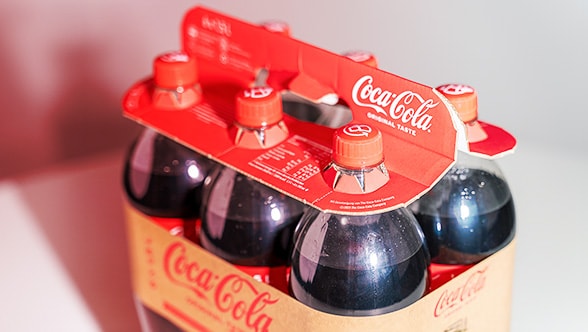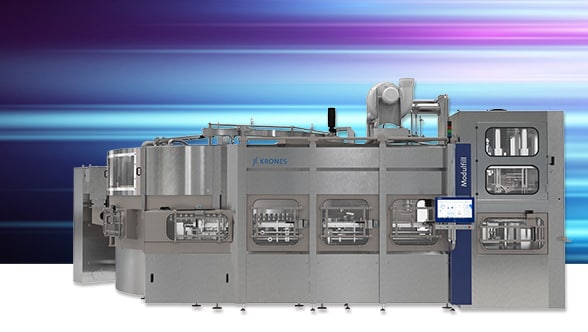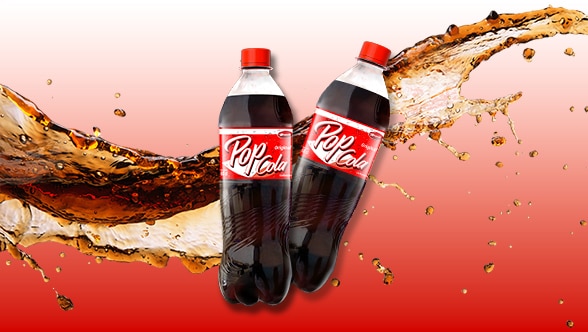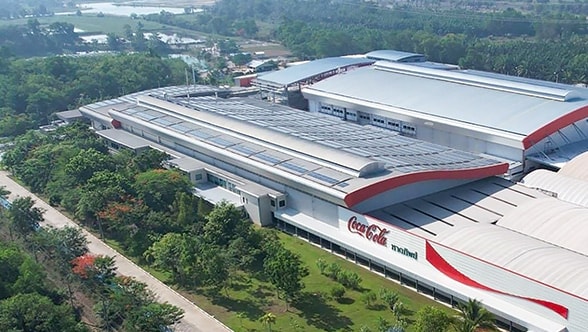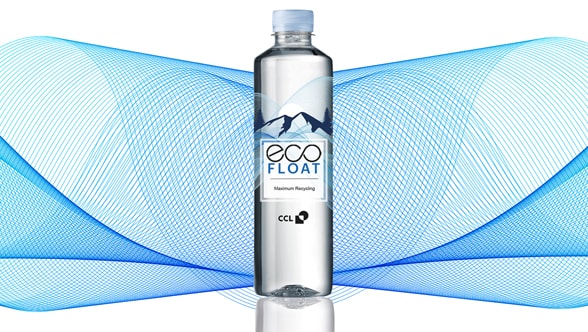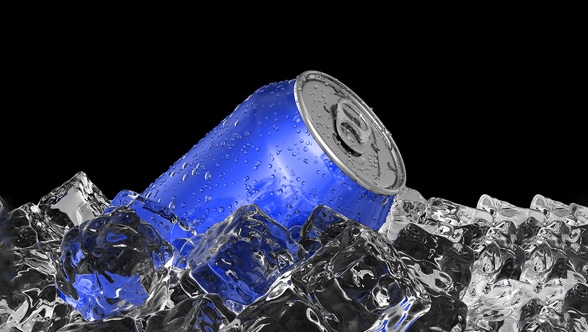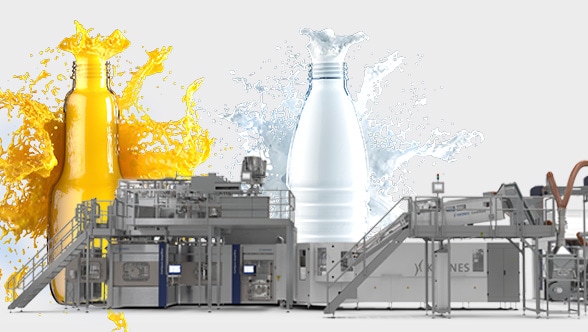New syrup room from Milkron
The Hydronomic, though, is not the only new process technology equipment that Blends is getting from Germany: The installation team of Krones subsidiary Milkron has been in Knowsley since January 2022 in order to assemble the systems of the new syrup room.
Here the aim was to be able to produce as broad a range of beverages as possible. That’s because alongside CSD and water in a variety of flavours, Blends also has mixed alcoholic drinks such as hard seltzers in its portfolio. “For the canning specifically, we have a customer in the sports and nutrition sector who wanted to release a range of cans. We struggled to find capacity for canners in the UK and even in Europe to get the product right at the quality they wanted. The new syrup room and the canning system now enable us to offer our customers the corresponding diversity,” says Andrew Richardson.
The syrup contains various dosing stations, such as for flavourings or high-proof alcohol, a sugar-dissolving plant and two blending tanks each with a capacity of 15,000 litres. The scope of supply also included a CIP system.

